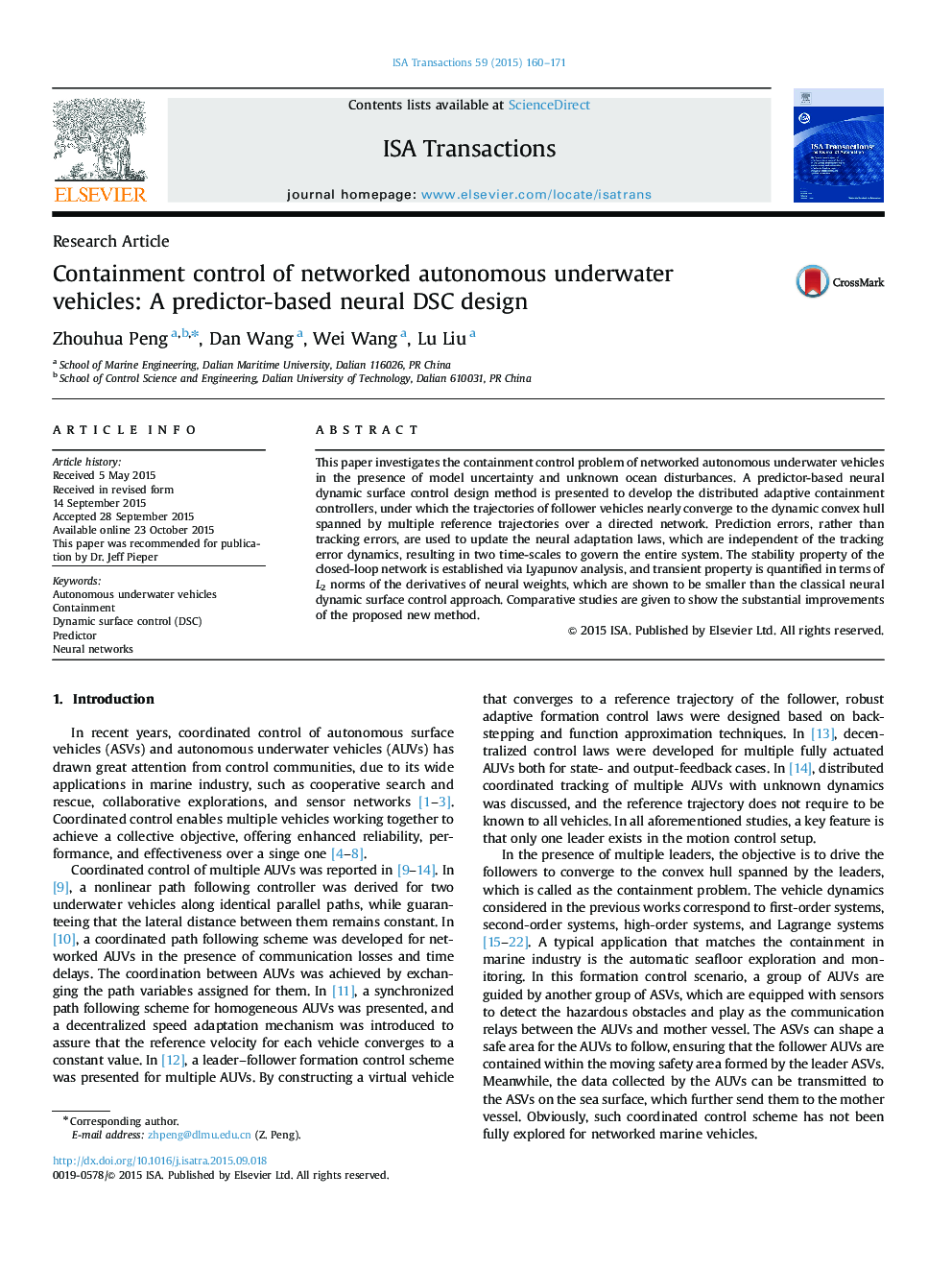| Article ID | Journal | Published Year | Pages | File Type |
|---|---|---|---|---|
| 5004376 | ISA Transactions | 2015 | 12 Pages |
â¢A new predictor-based neural DSC design method is proposed to develop the distributed adaptive containment controllers for AUVs.â¢Prediction errors, rather than tracking errors, are used to update the neural adaptation laws, which enable fast identifying the vehicle dynamics without incurring high-frequency signals.â¢For the first time, it is rigorously proved that the transient performance of the proposed predictor-based neural DSC method performs better than the classical neural DSC approach, with smaller L2 norms of the derivatives of neural weights.
This paper investigates the containment control problem of networked autonomous underwater vehicles in the presence of model uncertainty and unknown ocean disturbances. A predictor-based neural dynamic surface control design method is presented to develop the distributed adaptive containment controllers, under which the trajectories of follower vehicles nearly converge to the dynamic convex hull spanned by multiple reference trajectories over a directed network. Prediction errors, rather than tracking errors, are used to update the neural adaptation laws, which are independent of the tracking error dynamics, resulting in two time-scales to govern the entire system. The stability property of the closed-loop network is established via Lyapunov analysis, and transient property is quantified in terms of L2 norms of the derivatives of neural weights, which are shown to be smaller than the classical neural dynamic surface control approach. Comparative studies are given to show the substantial improvements of the proposed new method.
